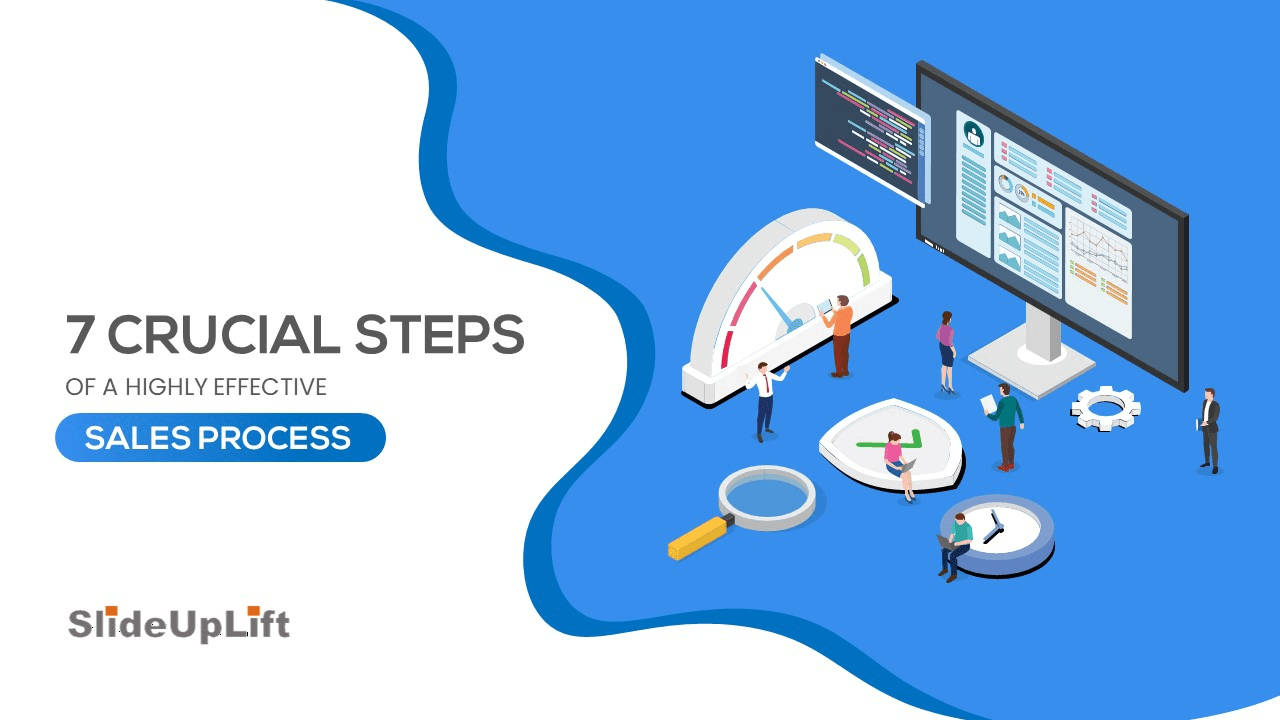Every company, no matter how large or small, wish to increase product sales. This selling journey, however, is incomplete unless effective sales process steps are established. Without it, you’ll have no idea where you’re going or what you’re doing.
Well-defined steps in the sales process give structure to your sales activities. This results in a systematic flow of information and actions as you move opportunities through the sales cycle. It helps you stay organized and focused on the end objectives while paying attention to the stages in between.
What Is A Sales Process?
A sales process is a collection of sales steps that help a sales representative close and convert a deal. It is a comprehensive guide for sales professionals. The sales process is a well-structured framework for increasing sales quickly and easily.
It contributes to higher overall sales efficiency and profit margins. A sales process streamlines the entire sales cycle, from prospecting to closing the deal.
Benefits Of Building Sales Process Steps For Closing More Deals
A smooth sales process aids in the development of a dynamic relationship between the company and its customers. It shortens the sales cycle and contributes to higher profit margins. The following are the benefits of creating a sales process:
1. Stay on course
Following a clear path simplifies and keeps you on track. A well-defined sales process serves as a guide. It guides you through the entire sales process, from initial contact to contract to sign.
- A sales process can help you figure out where your buyers are in the purchasing process.
- It guides you on what you must do at each stage.
2. More accurate understanding
Increase your understanding of your sales and prospects. A formalized process ensures that efforts are channelized in the right direction. You can quickly identify risks and take action in real-time. It aids you in removing activities that yield no results. Some specific things you can do:
- Determine the point at which the transactions have become stalled.
- Find out why your transactions are stalling.
- Determine what motivates action so that the transaction can progress from one stage to the next.
3. Faster on-boarding and training
It is easier to train new sales representatives when you have a standardized sales process. You can make them visualize what needs to be done in a variety of situations. They can learn the fundamentals quickly and get started.
- It is a very efficient method of acquainting new reps with your company’s selling approach.
- They will understand what you are looking for and what they must do to achieve that.
- You can also identify skill gaps and provide adequate training to your current sales representatives by educating them on the sales process.
4. Deeper understanding of prospects
A well-defined sales process benefits your company more because it defines the ideal customer profile and buyer persona. Knowing what your prospects want enables you to understand them better and provide more tailored solutions.
5. Getting more qualified leads
The sales process helps you to screen out low-intent leads and focus on high-intent leads, allowing you to close deals faster. As a result, you’ll be able to generate more qualified leads while also shortening the sales cycle.
6. Forecasting numbers
Precision is everything in sales, and a visual sales pipeline helps provide a clear picture of your sales, assisting in revenue forecasting. A well-managed sales process is very advantageous because it puts measurement behind your sales funnel, resulting in more predictability in revenues and sales performance.
7 Crucial Steps Of A Sales Process
The selling journey is divided into seven simple steps, commonly referred to as the “7-step sales process.”
Each step, eventually leading to converting a potential prospect into a paying customer must be completed with the utmost care. Even though each company’s sales methodology may be unique, the general framework applies in almost every situation. While the details below refer to the involvement of a salesperson – these equally apply if your website was doing the selling for you, for example. Here are these generalized steps in detail,
1. Prospecting – The hunt for new customers
Prospecting is the first and most crucial step in the sales process, in which you look for new buyers. Knowing where to target is essential for successful prospecting.
Rather than casting a wide net and approaching everyone, narrow your search and target specific companies.
- For better results, create a buyer persona.
- This will save you crucial selling time and keep your pipeline healthy
- Find out whom you should target
- You can create a buyer persona by consulting your database of previous successful customers.
- Study their buying habits, pain points, and preferences
2. Qualification – The discovery
You’ve targeted the right prospects, haven’t you? Are you certain? Always be cautious in sales because wrong turns can land you in hot water. As a result, there is a qualification step in the sales process where you try to learn more about the prospects by asking qualifying questions.
Dig as deep as you can and learn everything about your prospects to ensure you’re on the right track. This step also aids in the development of rapport and the prospect’s trust.
- Understand if the prospect needs your product
- Do additional research; browse through their website and social media pages.
- Read various reviews about their product and company
- See who are their customers
- Try to find out their strengths and weaknesses
3. Appointment setting – Way to reach and get in front of your prospects
To persuade the prospect to meet with you, you must take each step carefully. Meetings are the most effective way to demonstrate your product or service’s value proposition.
Yes, it is a laborious task, but it is well worth the effort. Your prospects will give you their undivided attention in return. So, do whatever it takes to get an appointment.
- Begin with a conversation, listen to the prospect’s concerns, and provide the necessary information before scheduling an appointment.
- Ensure you sound confident while setting an appointment
- Impress the prospects and give them reasons to meet you
- Be patient and politely ask for the prospect’s time
- Don’t sound too sales and avoid hyperboles
4. Presentation – Displaying the unique value of your product
This is a critical step in the sales process where you can influence a buyer’s decision. Sales presentations aid in the nurturing of leads.
You have understood the prospects’ concerns and problems during the initial stages of the sales process. It is now time to present your product to them as a solution. Demonstrate how your product can help them streamline their operations. You can either show a sample of your product or give a demo here. Make the most of your presentations to demonstrate your product’s superior capabilities.
- Ensure the presentation is tailored to the prospect’s requirements
- It should speak about the problem faced by the prospect and how can your product help in overcoming that issue
- Know everything about your product to handle any sort of questions raised by the prospect
- Study your competitors to show your prospects how are you better than the rest
- Avoid long, uninteresting explanations
5. Objection handling – Facing and handling the “Nos”
Sales objections are a common stumbling block that almost all sellers face during their sales journey. No business will readily invest in a solution. The majority of buyers are torn between buying or not buying a product. Never jump to the conclusion that the prospect is uninterested in your offer based on their initial reaction. Their objections are motivated by a variety of factors.
Sales objections are a challenge that must be handled with tact. Instead of reacting and responding to the objection immediately, listen to it calmly. Allow your prospects to express their concerns. After an objection, pause and consider your response. Successful salespeople pause for 5X longer after a customer’s objection than their less successful counterparts.
- Step in the customers’ shoes and understand the situation from their point of view
- Don’t interrupt the prospect
- Clarify when you doubt to ensure you don’t address the wrong objection
- Ask a few exploratory questions as there are chances that the prospect might be hiding the genuine concern
- Don’t get disappointed with objections
6. Closing – The final verdict
This step in the sales process is critical. You can either close the deal or lose it. Finding the right way to close is critical if you want to taste sales success.
It would be disheartening to lose after getting so close to the finish line. Wouldn’t that be true? As a result, take extra care with this step. Try to exceed your prospect’s expectations and demonstrate the benefits of becoming a customer. When speaking with prospects, choose your words and phrases carefully. Avoid using the following words:
- “Discount”: Decreases close rates by 17%
- “Contract”: Hurts close rates by 7%
- “Your company’s name”: Affects close rate by 14% when used four or more times in one call.
Persuade prospects to take the appropriate action. Use the right closing techniques and tactics to persuade your prospective customers to sign on the dotted line and become paying customers. Here are a few closing techniques to consider:
- Adjournment close: Don’t rush; give your prospects some time to think
- Affordable close: Make the prospect feel that they can afford the product you are offering
- Bonus close: Offer delighter to capture the interest of the prospect
- Quality close: Emphasize on quality features of your product instead of the price
- Urgency close: Create a sense of urgency to close the deal quickly
- Testimonial close: Use the testimonial of a satisfied customer to convince the prospect
7. Delivering value– Stay connected with your customers
Closing does not mean closure. Continue to provide value even after you have received the valuable dollars from your prospects. An existing customer can be used to reach out to new customers. As a result, don’t take them for granted.
Aside from that, if they have a negative experience with your product, they may share it with their networks as well.
As we all know, negative word-of-mouth spreads like wildfire. Ensure that your customers receive the benefits you promised them during the first stages of the sales process.
- Call your customers and take their feedback about using your product
- If your customers are facing any difficulty, then address and fix the issue immediately
- Send them newsletters and keep engaging them with informative content
- Ask for referrals and testimonials without hesitation
Common Mistakes That You Must Avoid
To ensure a successful sales process, it is critical to be aware of and avoid common mistakes made by sales representatives.
1. Not documenting the sales process
The sales process does not always follow the same pattern. Every prospect is unique, so their needs will be as well. As a result, a sales process that worked for one prospect may not work for another.
To avoid relying on the sales process, you must document each sales process that you develop. Different approaches may produce different outcomes, and you can focus on the ones that produce the best outcomes. Every experiment must be documented so that you can learn from it and improve your sales processes.
2. Not defining the stages
It is critical to define each step of your sales process. You can’t just wing it in marketing! As a result, create a series of stages that your prospect will go through to ensure a smooth process.
Such actions and triggers at each stage will assist you in determining where you lack effort and which stage requires more effort.
3. Ignoring micro-goals
Focusing on the end goal is important, but one must not overlook the process before reaching the goal. Micro-goals are critical for tracking performance and increasing team members’ confidence.
Set micro, attainable goals for your salespeople to focus on while working with prospects; achieving such micro-goals can also aid in achieving faster results and increasing productivity.
4. Having rigid sales methodology
Following a single sales methodology may yield the desired results; however, studying multiple sales methodologies and implementing different approaches from each one may yield a better sales process.
So, don’t be afraid to experiment with your sales methodology; change it based on your prospects’ preferences, which tend to shift over time.
Awesome Sales Process Templates That Can Close More Deals For You
Sales departments are increasing their efforts, yet only 18% of buyers trust salespeople, implying that sales teams must work smarter rather than harder. How can sales leaders ensure that this occurs?
A sales process is a practical method for simplifying and documenting your sales goals and strategies for achieving them. In this process, budgets, marketing strategy, positioning, and other topics are also thoroughly explained.
Create your sales plan using the SlideUpLift sales process template. Make it simple for your team, direct reports, and executives to understand your goals, how you intend to achieve them, and any assistance you will require.
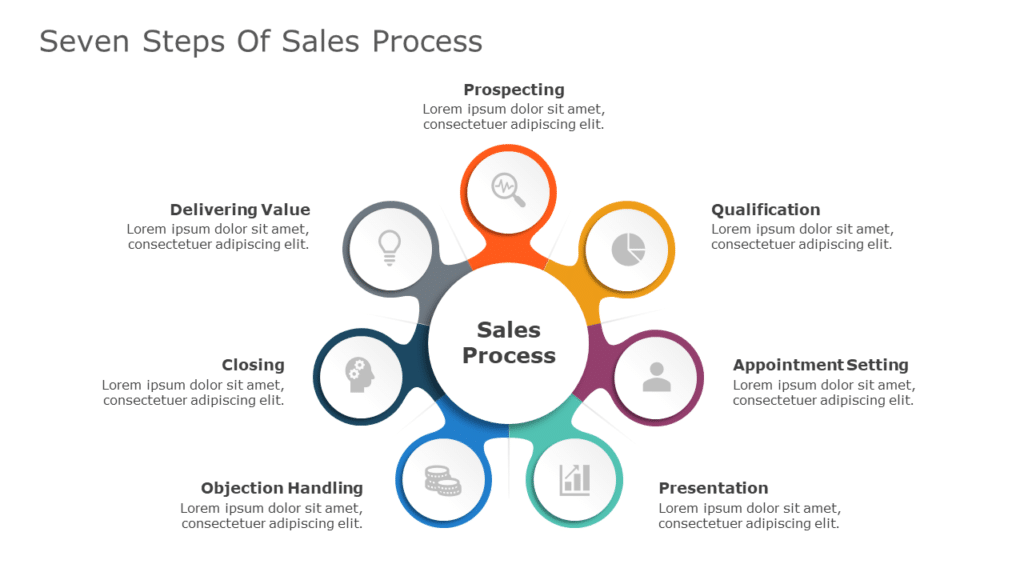
Sales Process
Source: Sales Process by SlideUpLift

Sales Plan Executive Summary
Source: Sales Plan Executive Summary by SlideUpLift
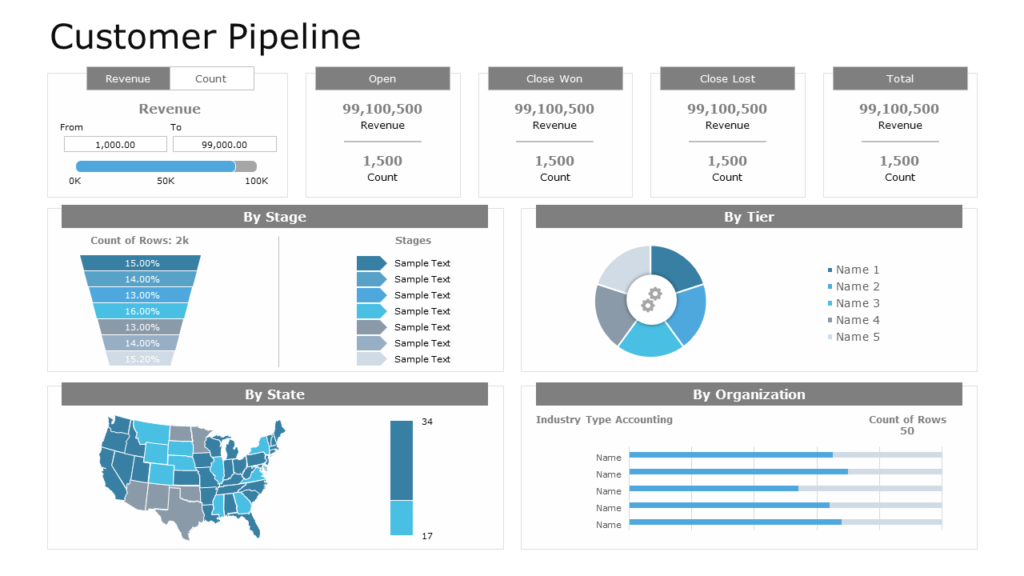
Customer Pipeline
Source: Customer Pipeline by SlideUpLift
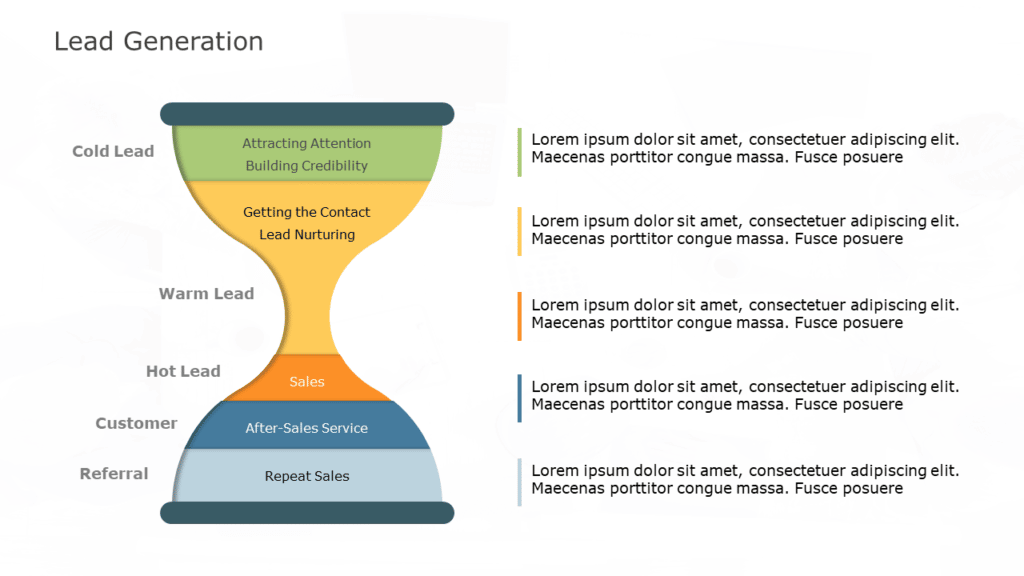
Lead Generation
Source: Lead Generation by SlideUpLift
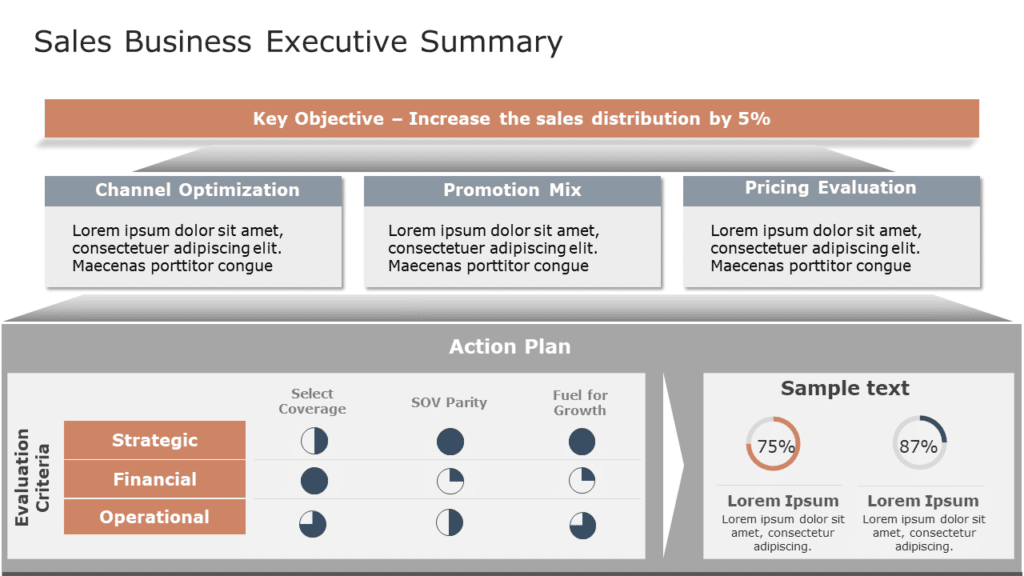
Sales Business Executive Summary
Source: Sales Business Executive Summary by SlideUpLift
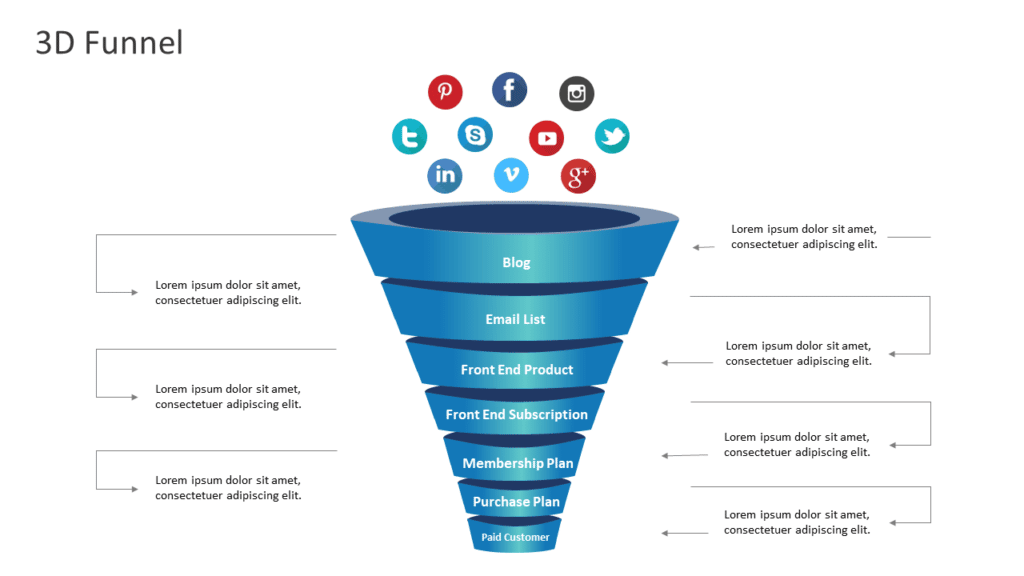
3D Funnel
Source: 3D Funnel by SlideUpLift
Wrapping It Up
Following a structured corporate sales process can make a significant difference in your company’s revenue; if done correctly! Create a highly effective sales process. Because all of the steps in the sales process are critical, make sure you give each one equal weight.
Now you don’t have to scour the web to find out the right templates. Download our PowerPoint Templates from within PowerPoint. See how?
Looking For Powerpoint Design Agency?
Call Pursho @ 0731-6725516
Telegram Group One Must Follow :
For Startups: https://t.me/daily_business_reads
#Crucial #Steps #Highly #Effective #Sales #Process

